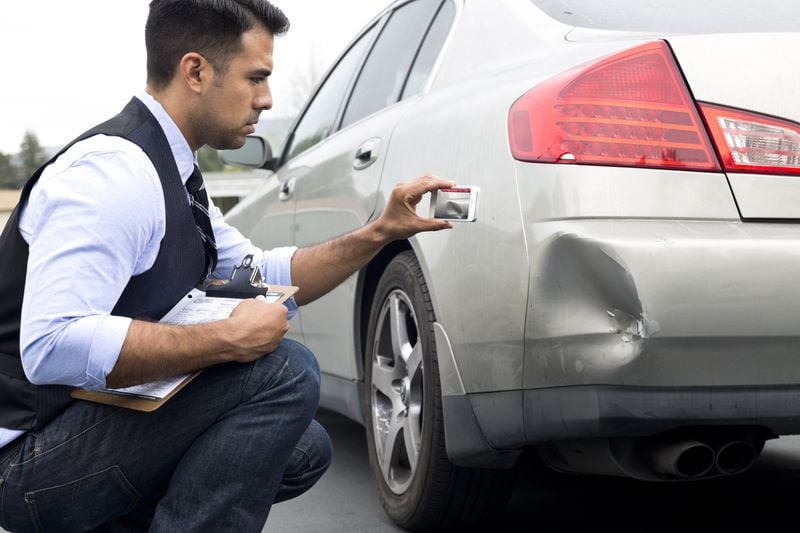Most of us need car insurance, yet few of us fully understand it.
Dozens of car insurance companies may be vying for business in your area, including nationwide players and local insurers. Each offers an eye-glazing assortment of policy options, making it hard to compare policies and figure out what is the best and cheapest car insurance.
If you are looking for the lowest prices, there are some guidelines worth following as you do your research. Here are eight things you can do to ensure that you’re getting the best coverage at the best possible rate.
1. Don’t assume any one company is the cheapest
Some companies spend a lot of money on commercials, trying to convince you that they offer the lowest car insurance rates.
The truth is that prices individuals will pay for the same coverage at the same company vary widely, and no single company can claim to be the low-price leader. The insurance company that’s cheapest for one person in one place might be the most expensive option for a driver in another state. Some insurance companies have also developed complex predictive models that may charge you higher rates if they show you are unlikely to switch providers. This practice, called “price optimization,” is banned in 16 states.
>> 6 Reasons to Leave Your Car Insurance Company
And there’s quite a bit of savings at stake: A recent NerdWallet analysis found a difference of $859 a year between the average insurance quote and the lowest available quote.
The only way to ensure you’re getting the best deal is to shop around.
2. Don’t ignore local and regional insurance companies
Just four companies control nearly half the nation’s car insurance business: Allstate, Geico, Progressive and State Farm. But smaller, regional insurers, such as Auto Owners Insurance and Erie Insurance, often have higher customer satisfaction ratings than the big names — and they may have lower rates, too.
>> 10-Word Answers (or Less!) to Your Biggest Car Insurance Questions
3. Check for discounts
Insurers provide a variety of discounts, including price breaks for customers who:
- Bundle car insurance with other policies, such as homeowners insurance
- Insure multiple cars with one policy
- Have a clean driving record
- Pay their entire annual or six-month premium at once
- Agree to receive documents online
- Own a car with certain anti-theft or safety features
- Are members of particular professional organizations or affiliate groups
Discounts vary by company and location. Check insurance company websites or consult with agents to find out which ones might apply to you.
4. Pay your bills on time — and not just your insurance bills
Your credit is a significant factor in the car insurance quotes you’ll receive — except in California, Hawaii and Massachusetts, which don’t allow insurers to consider it. Insurance companies say that customers’ credit has been shown to correlate with their risk of filing a claim.
Improve your credit — and lower your premiums — by paying your bills on time and reducing your debt. Track your progress by checking your credit reports at least once per year.
5. Consider insurance costs when buying a car
You probably already pay attention to factors such as fuel efficiency and repair costs when deciding which car to buy, but you should also consider insurance premiums, which can vary between popular models. A NerdWallet review of rates for best-selling vehicles in 25 cities found that the Toyota Camry, for example, cost an average of $187 per year more to insure than the comparable Honda Accord. Similarly, a Toyota RAV4 cost an average of $201 more to insure than a Honda CR-V.
6. Skip collision and comprehensive coverage for your clunker
Collision coverage pays to repair damage your vehicle receives in an accident involving another car or an inanimate object. Comprehensive pays to repair vehicle damage caused by weather, animals or vandalism, or reimburses you for your car if its stolen. But both will only pay up to the value of your car. If yours older and has a low market value, it may not make sense to shell out for the two policies.
7. Consider raising your deductible
If you need to carry comprehensive and collision — because your car is a later model or your lender requires it — you can save a substantial amount of money by raising the deductibles. A NerdWallet study of rates in Florida and California found that customers who increased their deductibles from $500 to $1,000 saved about $200 per year on premiums, while those who increased them from $500 to $2,000 saved $362 per year. Keep in mind that this will mean you’ll pay more out of pocket if you do make a claim.
>> Avoid These 6 Mistakes When Switching Car Insurance
8. Consider usage-based plans, especially if you don’t drive much
If you’re a safe driver who doesn’t log very many miles, consider a usage-based insurance program, such as Allstate’s Drivewise, Progressive’s Snapshot or State Farm’s Drive Safe and Save. By signing up for these programs, you allow your insurer to track your driving electronically in exchange for possible discounts, based on how much you drive, when you drive and how well you drive.
If you drive less than 10,000 miles per year, you might be able to save money with a mileage-based insurance program, such as Metromile or Esurance Pay Per Mile. Metromile is currently available in seven states, while Esurance Pay Per Mile is only available in Oregon.
Aubrey Cohen is a staff writer at NerdWallet, a personal finance website. Email: acohen@nerdwallet.com. Twitter: @aubreycohen.


/cloudfront-us-east-1.images.arcpublishing.com/ajc/P7DYBH6TO7FEKG4SUXQQKADRXE.jpg)



